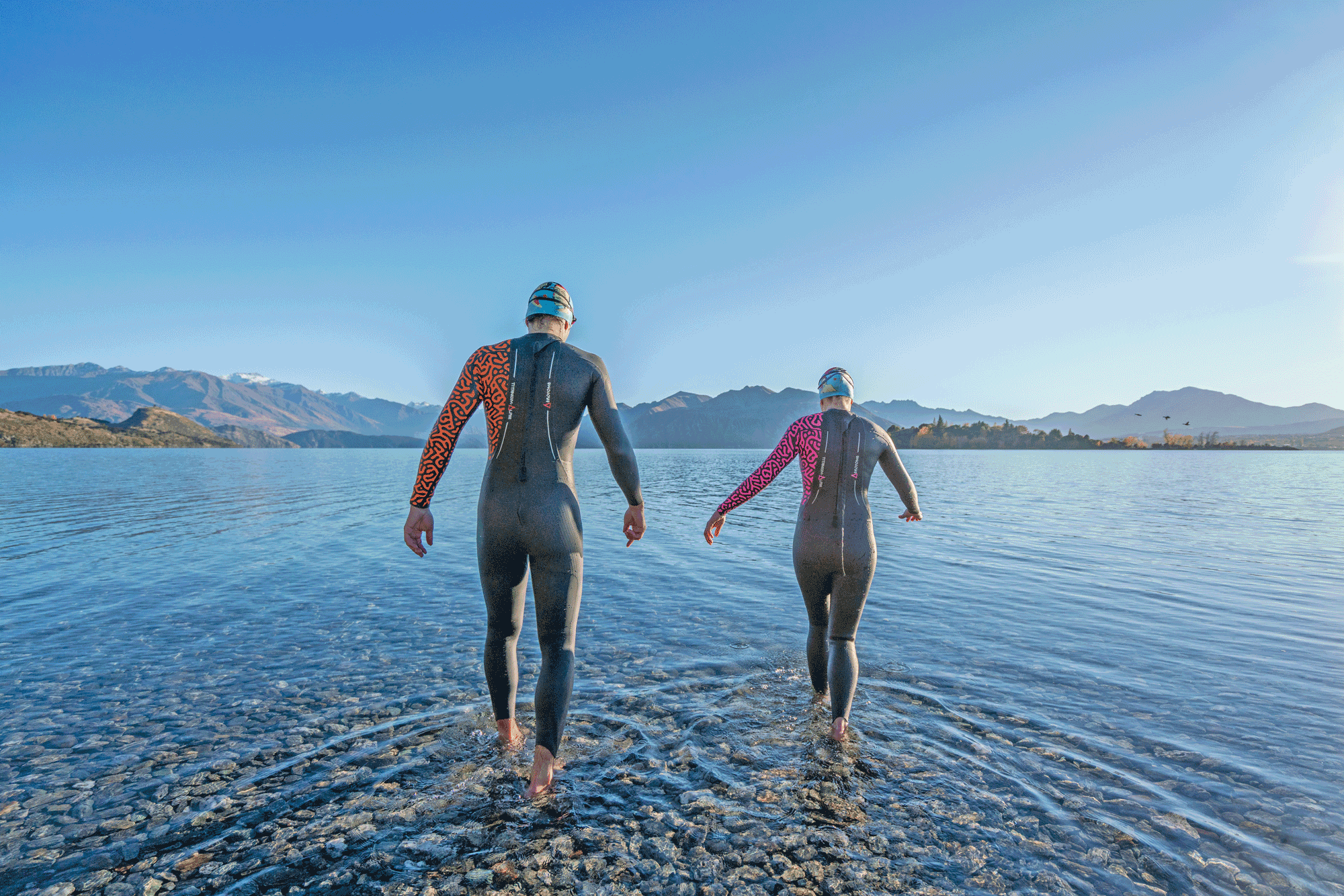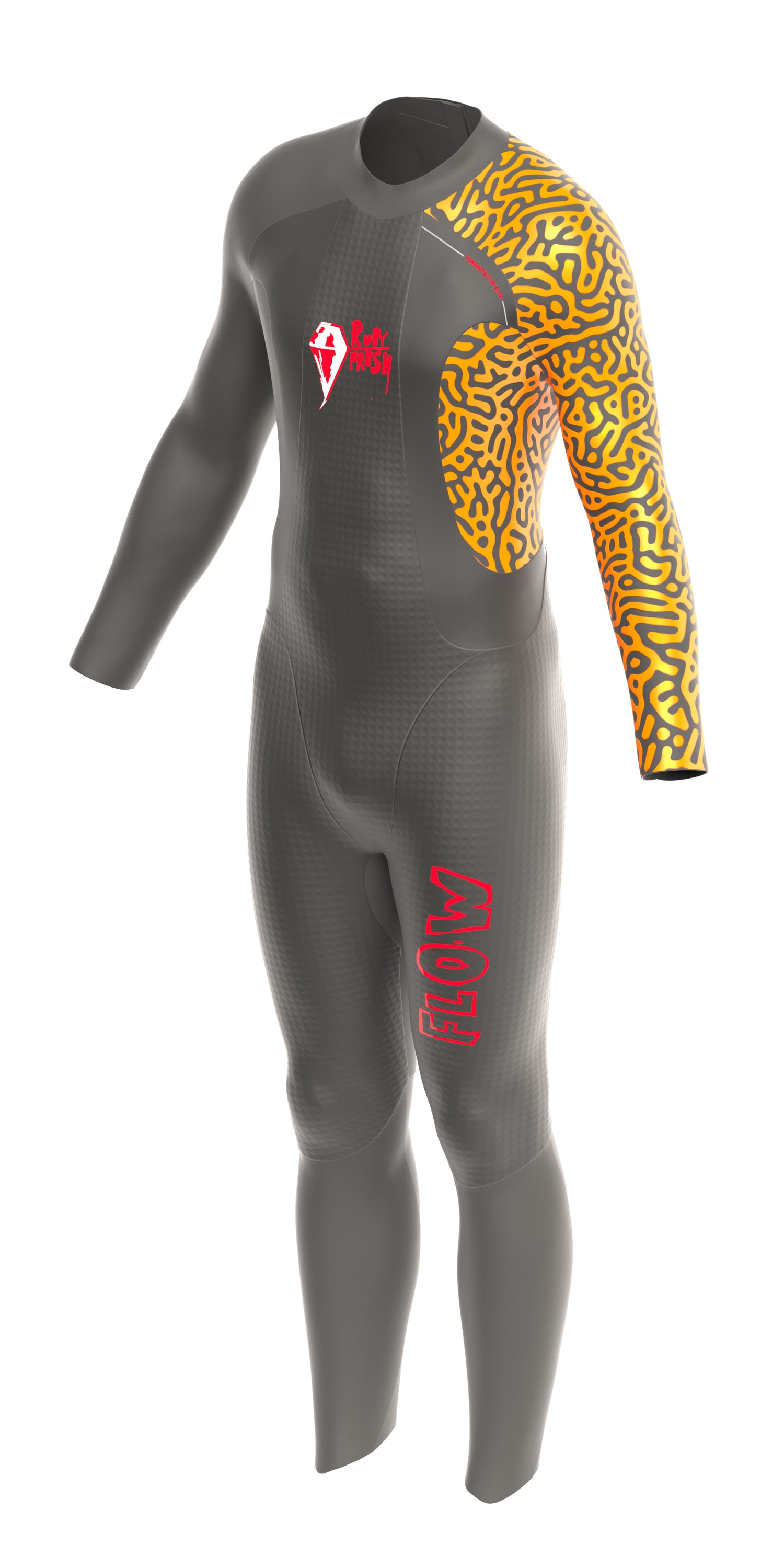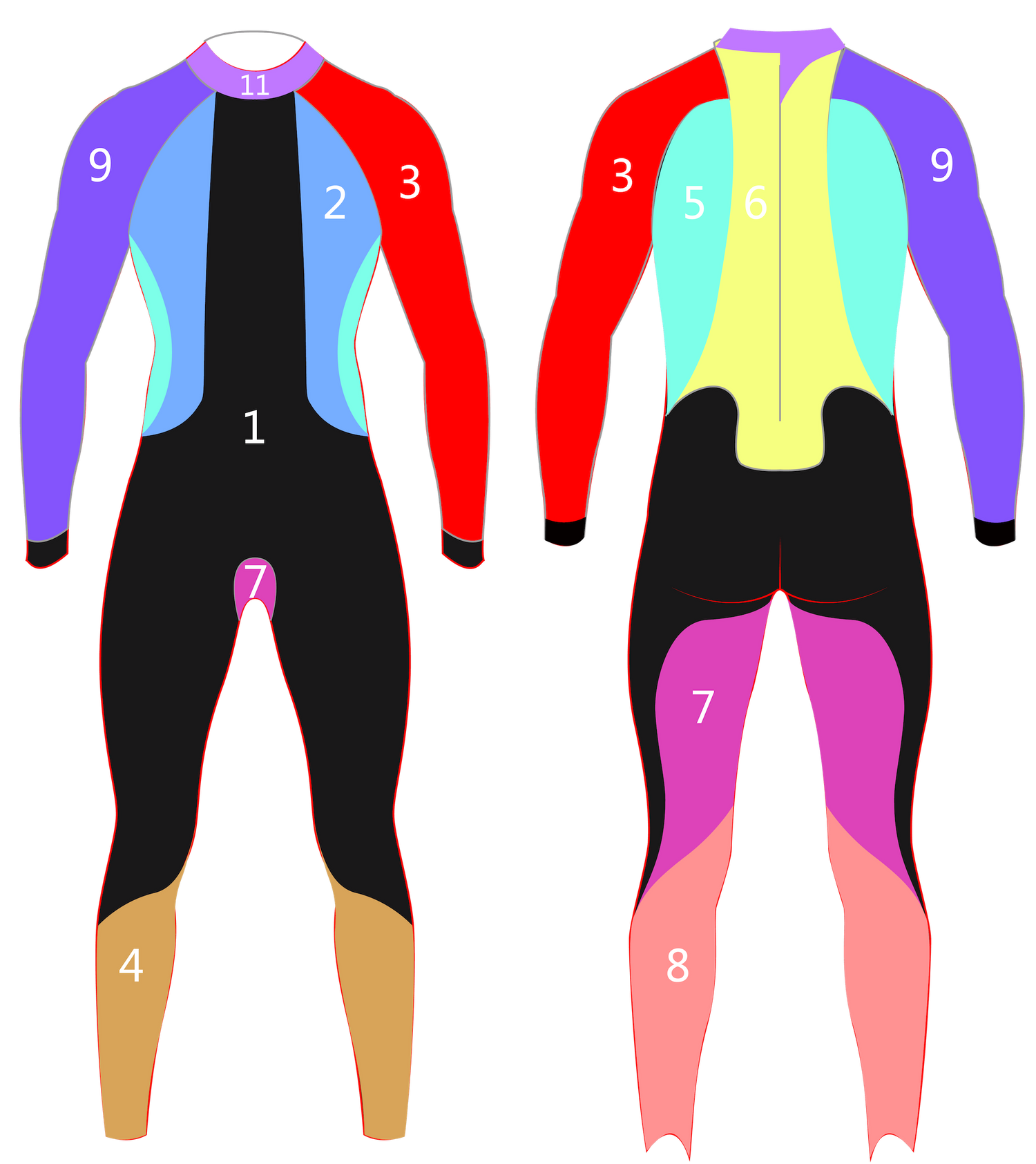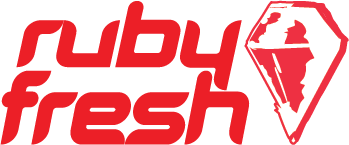V2 Design

Wetsuits designed for freshwater swimming
Ruby Fresh wetsuits are Open Water Swim wetsuits expressly designed for freshwater swimming where the need for greater buoyancy, warmth and visibility is increased. Backed by the event The Ruby Swim — itself a creation inspired by the amazing geographical location of Ruby Island to swim around — and all set in Lake Wanaka's pristine alpine waters.

The Need
Most, if not all triathlon and open water swim wetsuits, are designed based on use in salt water, and predominantly, warmer water.
Ruby Fresh wetsuits — the 'Flow' men's & women's models are designed around the needs of freshwater swimming i.e less buoyant and cooler water conditions compared to those of the sea.
Added to this, such is the nature of open water swimming, it’s also important to be seen.
So the three points of difference are: Buoyancy • Warmth • Visibility
This wetsuit combines these three separate attributes not previously seen together in this product space.
The wetsuits are also designed to enhance body position in the water — the 'downhill' swim position feeling; enhance comfort in colder water — to keep you warmer for longer or to increase swim duration; and to be seen — additional safety in a multi-user environment.
The first suits hit the shores of New Zealand on January 8th, 2019.
The points of difference
Concepts:
• Improved buoyancy for freshwater use rather than salt water use — introducing the ‘Buoyancy Tray’.
• Yamamoto Ti-Alpha Titanium layers. Warm. Thin. Light.
• Open Water visibility. Hi-Vis Day-Glo graphics.
• Improved arm maneuverability.
• Body core stabilisation. Swim-Roll dynamics. Enhancing open water swimmer efficiency.
• Easy on, easy off — helping to ease frustration, especially for older swimmers.
-
The Flow suit is targeted at mid-range ability swimmers and upwards. As a triathlon wetsuit it has shown to be fast in competition due to the buoyancy profile which creates an improved streamlined position in the water. It adheres to FINA (Fédération Internationale de Natation) rules.
-
A prime requirement of the design is to enhance the 'feeling' that you are swimming well. This is as important as 'actually' swimming well. Creating a streamlined body position by altering the swimmer's position in the water, combined with the extremely maneuverable arms (which has been the single biggest point of feedback), all adds to the intended overall improved user experience.

V2 Flow Panel Design
Yamamoto #40 & #39 with SCS coating is used across the entire wetsuit.
Yamamoto #40 1.5 mm neoprene is used throughout the entire arm/shoulder/latissimus dorsi sections (panels 3, 5, 9 & 11). It has excellent modulus, features a strong skin surface and flexibility and is the most stretchable neoprene on the market. Such extensive use of #40 is not used in any other brand of wetsut.
-
The torso section of the suit, waist up, is lined with thermal Ti-Alpha. This titanium layer between the outer neoprene and the lining reflects 35-40% of generated body heat back towards the body, heating the thin water layer between the body and suit lining, rather than being dissipated immediately out to the water. In addition, the calf panel (panel 8) also benefits from a Ti-Alpha layer in an effort to reduce calf cramping — plus being 2 mm thin enables easy removal when you are in a hurry! All panels use Yamamoto 'SCS' (Super Composite Skin) proprietary hydrophobic coating.
-
The one-piece core panel section (panel 1) is designed to be very buoyant in specific positions. The entire panel uses 5 mm Aerodome Yamamoto SCS Neoprene which is 20-30% more buoyant than non-aerodome neoprene material. It is active from below the knee to the entire front thigh, wrapping entirely the hips, buttocks and lower abdomen. The positioning lifts the hips and legs noticeably and promotes hip roll. The panel incorporates a central chest 'pivot' section to the neck cuff. Its width is gauged to provide less buoyancy to the sternum region alongside the 3 mm chest panels (panel 2). This is to further aid the 'downhill' body position, in conjunction with the raised hips/legs. We term this entire panel the 'Buoyancy Tray'. The rest of the suit uses #39 grade which is lightweight and soft. The rear of the thigh (panel 7) is 4 mm.
-
Overall, the wetsuit's neoprene panel positioning promotes the more efficient swim-roll dynamics technique rather than a flat swim positioning. This technique enhances reach and creates an improved power phase in conjunction with hip-roll movement.
The exclusive Ruby Fresh Grab Tab™
Get a Tow Buoy-

The Grab Tab™
... at base of the zipper, to aid closing your wetsuit. Grab the Tab with one hand, pull up the zip cord with the other. It's genius. And it provides a clean alternative to secure your Tow Buoy.
-

Every suit comes with a clip
... specially sourced charcoal black oval clips.
-

Clip your buoy
... so easy!
Other Features of The Suit Design
-
• No wrist-cuffs. After studying their need and function and then eliminating them.
-
• No internal forearm 'catch' panels — omitted by design after the realisation catch panels were almost useless and little more than a marketing gimmick.
Combined, these two design details allow the use of a very long taped seam on the inside of the forearm (duplicated on the calf section of the leg) which allows these sections of the suit to be cut to desired length. This enhances speed of removal in a racing situation (by cutting shorter) or to allow a better arm/lower calf fit.
The calf panel is made from 2 mm titanium-lined #39 grade neoprene, allowing for very quick and easy removal over the heel, better than the elastic stretch panels that were trialed. This is great for T1 times in Tri races but also for those with difficulty reaching that area of the body. This can be quite an issue for some.
• We have a verified Yamamoto Code of Authenticity



